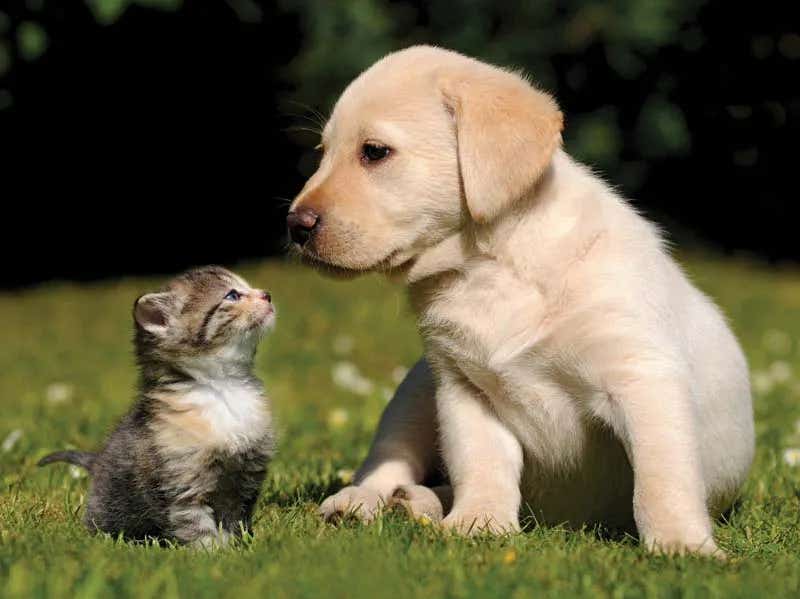Do pet owners love their dogs or cats more? Surprising study results
In a world where pets are often viewed as family members, do dogs receive more affection and care compared to cats?

[Oct. 24, 2023: Staff Writer, The Brighter Side of News]
A groundbreaking study offers hope, suggesting a simple yet profound way to potentially extend a dog's lifespan. (CREDIT: Creative Commons)
In a world where pets are often viewed as family members, a nuanced question regarding human-animal bonds surfaces: do dogs receive more affection and care compared to cats?
This question forms the core of a recent study spearheaded by Dr. Peter Sandøe and his team at the University of Copenhagen, challenging the conventional wisdom and unearthing the cultural dimensions influencing pet care attitudes.
Past inquiries have suggested that pet owners exhibit more muted emotional bonds and financial commitment towards cats, possibly attributed to feline independence and perceived aloofness.
Overview of sample size of different owner profiles and sample sizes across three of the measures of how much people care about their dogs and cats employed in the study – divided into countries. (CREDIT: Frontiers)
However, Dr. Sandøe counters, "These studies often overlook cultural variances and rely on non-representative samples." His latest research, published in Frontiers in Veterinary Science, digs deeper into this interspecies care disparity, probing whether societal attitudes might eventually parallelize the status of cats with the currently exalted position of dogs.
Paws for Thought: Methodology Unleashed
Sandøe's research paradigm involved collaboration with a survey company to engage a diverse cohort of pet owners from Denmark, Austria, and the United Kingdom. The choice of these nations, although closely tied in several cultural and economic threads, presents a staggered timeline in their historical urbanization. This factor, according to the researchers, potentially correlates with contemporary societal attitudes towards pets, reflecting the populace's historical proximity to rural animals.
The socio-demographic characteristics of the three samples. (CREDIT: Frontiers)
The robust sample encompassed 2,117 respondents, a mix of exclusive dog owners (844), cat owners (872), and those with both pets (401). The survey delved into multifaceted care dimensions, incorporating the Lexington attachment to pets scale to gauge emotional bonds, alongside queries on veterinary care investment and expectations.
Cross-Country Care: Emotional Bonds and Financial Commitments
The findings painted a consistent picture: dogs seemed to have a paw advantage in winning their owners' hearts across all surveyed nations. They notched higher on the emotional attachment scale, witnessed more frequent insurance coverage, and their owners exhibited a willingness to shell out more for their medical treatments.
However, national disparities were stark. The UK's preference for dogs over cats was marginal, whereas Austria showed a clearer bias, and Denmark's partiality was significantly pronounced. "The degree of difference varied dramatically between countries," Sandøe observed, suggesting that the divergence is "likely influenced by cultural factors, including pets' cohabitation duration with their owners."
Related Stories
The trends persisted across other parameters. Emotional attachment discrepancy between dog and cat owners was more pronounced in Denmark, coupled with a stark contrast in insurance coverage for the two species. Furthermore, Danish pet owners' preparedness to finance treatments showed a substantial skew towards dogs.
Sandøe extrapolated, "There seems to be no natural ceiling to the care people might extend to their cats vis-à-vis dogs. The British, often stereotyped as fervent cat aficionados, indeed resonate with this profile per our study's revelations. Conversely, the Danes, though trailing, might eventually bridge this affection gap."
Global Pet Dynamics: Cultural and Practical Influences
The researchers postulate that these attitudes could be remnants of a predominantly agricultural era where proximity to animals varied — dogs collaborated closely with humans, while cats were relatively distant. Yet, other practicalities could contribute, such as higher treatment costs for dogs necessitating insurance or dogs' roles in promoting physical activities for their owners.
Could there exist nations where cats actually surpass dogs in care and emotional investment? (CREDIT: Creative Commons)
However, Professor Clare Palmer of Texas A&M University, co-authoring the study, advises prudence in generalizing these findings. "Our study's geographic scope is confined to central and western Europe," she notes, "It's compelling to ponder what analogous studies in diverse cultural landscapes might disclose. Could there exist nations where cats actually surpass dogs in care and emotional investment?"
The study indeed serves as a catalyst for broader global research, prompting a reevaluation of ingrained stereotypes about pet preferences. It beckons a deeper exploration into how historical, cultural, and practical aspects interplay in shaping our relationships with pets, reminding us that these bonds are as complex and varied as the societies that forge them.
For more science and technology news stories check out our New Discoveries section at The Brighter Side of News.
Note: Materials provided above by The Brighter Side of News. Content may be edited for style and length.
Like these kind of feel good stories? Get the Brighter Side of News' newsletter.
Joseph Shavit
Head Science News Writer | Communicating Innovation & Discovery
Based in Los Angeles, Joseph Shavit is an accomplished science journalist, head science news writer and co-founder at The Brighter Side of News, where he translates cutting-edge discoveries into compelling stories for a broad audience. With a strong background spanning science, business, product management, media leadership, and entrepreneurship, Joseph brings a unique perspective to science communication. His expertise allows him to uncover the intersection of technological advancements and market potential, shedding light on how groundbreaking research evolves into transformative products and industries.



